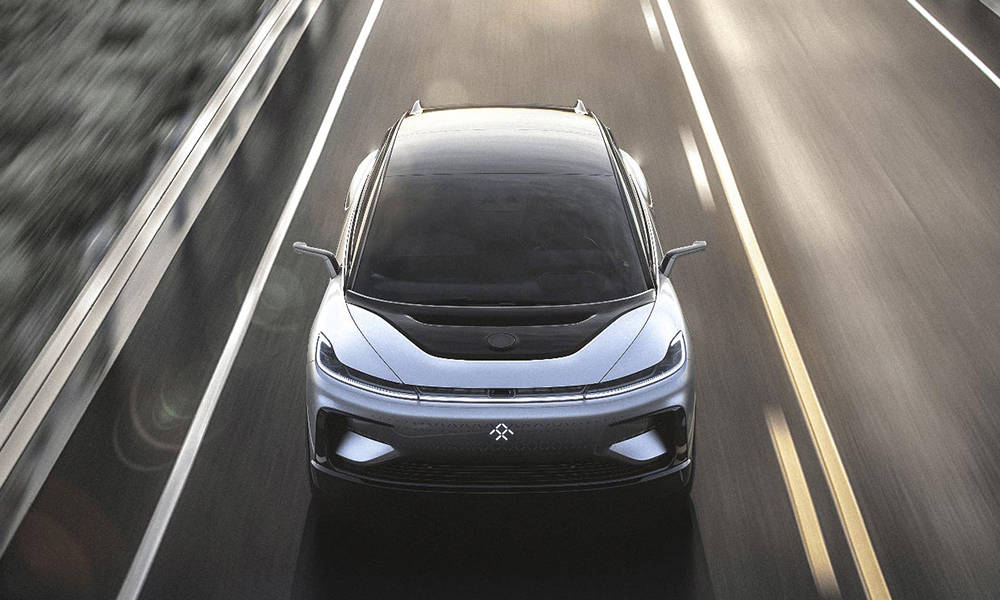Chinese consumers' demand for electric vehicles is declining
The Chinese automobile industry will see a slowdown in growth in 2023 after significant sales of electric vehicles (EVs) in 2022. The green transformation, however, is still ongoing. By 2030, we anticipate that there will be more zero-emission vehicles than those with internal combustion engines.
Chinese consumers' demand for electric vehicles is declining
The Chinese automobile industry will see a slowdown in growth in 2023 after significant sales of electric vehicles (EVs) in 2022. The green transformation, however, is still ongoing. By 2030, we anticipate that there will be more zero-emission vehicles than those with internal combustion engines.

After an EV-driven expansion in 2022, the rise of passenger vehicle sales will decline in 2023
According to figures from CEIC and the Chinese Association of Automobile Manufacturers, 23.5 million new passenger automobiles were sold in China last year, a rise of 10% from 2021. Battery and plug-in hybrid electric cars (BEV and PHEV) made up over 26% of all units, which is about twice as many as in 2021. This had a significant impact on the growth rates for overall automobile sales, particularly during the latter four months of the previous year. Around 75 percent of all Chinese EV sales were fully electric vehicle (BEV) sales.
It is anticipated that new automobile sales will increase by little over 4% globally in 2023. Despite the year's poor start, the Chinese market is predicted to slightly outperform this number, with full-year sales growth of roughly 5%. Both the economic recovery and the easing of China's zero-Covid regulations should increase automobile sales.
After an EV-driven expansion in 2022, the rise of passenger vehicle sales will decline in 2023
According to figures from CEIC and the Chinese Association of Automobile Manufacturers, 23.5 million new passenger automobiles were sold in China last year, a rise of 10% from 2021. Battery and plug-in hybrid electric cars (BEV and PHEV) made up over 26% of all units, which is about twice as many as in 2021. This had a significant impact on the growth rates for overall automobile sales, particularly during the latter four months of the previous year. Around 75 percent of all Chinese EV sales were fully electric vehicle (BEV) sales.
It is anticipated that new automobile sales will increase by little over 4% globally in 2023. Despite the year's poor start, the Chinese market is predicted to slightly outperform this number, with full-year sales growth of roughly 5%. Both the economic recovery and the easing of China's zero-Covid regulations should increase automobile sales.
China's percentage of new automobile sales has increased significantly
In China, the transition from internal combustion engines (ICE), also known as conventional cars, to electric cars began more than ten years ago and has accelerated significantly over the last two years, rising from 6% to 26%, thanks to government subsidies provided to citizens and corporate drivers. After a five-year low in sales in 2020, this signaled a turning point.
The key factor for the rapid rise of EVs in China in 2022 and the two years prior was subsidies and their decrease plan. To equal the average mileage expenses of conventional automobiles for drivers, EVs still need help. Although EV costs have been falling for years, according to BloombergNEF, battery prices started to rise in 2022. Instead, this has resulted in greater costs due to the broader inflationary pressure. The cost of owning an EV is anticipated to be equal to the cost of owning a standard car around 2026, despite the fact that the decreasing trend in battery costs is anticipated to accelerate starting next year and economies of scale will result in advantages once the industry develops.
Government EV subsidies that increased demand in 2020–2022
Each year from 2020 to 2022, almost two million automobiles were eligible for incentives.
From 2019 levels, subsidies were reduced by 10%, 20%, and 30% in 2020, 2021, and 2022, respectively. No more funding has been out until 2023.
For EVs employing a battery swap model, there is no price limit to take advantage of subsidies; however, EV passenger vehicle costs were restricted to CNY 300,000 (about $44,000) in order to qualify.
Unless subsidies are maintained, the growth in EV sales will decline in 2023.
This year's sales rise will be less supported by new EVs. There has been no indication that the monetary subsidies for EVs would be renewed, with the exception of the stated renewal of the car purchase tax exemption program for new energy vehicles (5% tax exemption is equivalent to roughly CNY10000). The government may not want to spend on subsidies to increase demand at a time when the economy is rebounding due to the growing fiscal load.
EV sales will decline after the recent fiscally motivated increase. Lithium prices seem to be falling considerably as expectations for FY 2023 are moderated. But, without more government financial subsidies, EV companies are anticipated to provide discounts, which may keep sales going in 2023. In the beginning of this year, we saw price reductions from Tesla across the board, followed by Ford and Xpeng for particular BEV models. Even if this might increase demand, it's unlikely that the price of batteries would immediately begin to decline again.
Overall, EV vehicle share is to increase marginally from 26% of all passenger cars in 2022 to 27.5% in 2023, provided fresh government incentives stop. China continues to dominate the trend of global electrification with this market penetration, followed by Europe. If China introduces a new government incentive for EVs, the percentage of EVs might soar over 30% this year.
In China, BYD continues to dominate the EV market
Car manufacturer BYD dominates the domestic Chinese EV market, followed by SAIC-GM-Wuling, Tesla, and other manufacturers. In 2022, BYD had a market share of more than 30% for BEVs and around 27% when PHEVs were included. Chinese brands make up slightly over 50% of all sales on the domestic market, followed by German, Japanese, and American brands. In 2021, the VW Group owned 9% of BEVs, but as the market grew and new models were introduced, this percentage began to decline.
The majority of new vehicle sales in China will be electric before 2030
China's plans to become carbon neutral by 2060 and drastically cut particle emissions will keep the auto industry on the path toward electrification. The imposition of maximum emissions profiles for manufacturing might be another governmental measure. The percentage of EVs in the passenger vehicle market would approach 50% and surpass conventional energy cars by 2030, contradicting China's prior commitment to a goal of 50% EVs (PHEV + BEV) by 2035. Nevertheless, this objective already appears out of date. The economics will also assist EV sales beyond 2025, when global price parity is achieved.
PHEVs are gaining ground
Plug-in hybrid vehicles are to make a higher proportionate contribution to electrification over the next several years as a result of the decline in EV subsidies. Sales of PHEVs as a percentage of all auto sales are anticipated to rise from around 5.5% last year to about 10.5% in 2025. Evidence from advanced electrification nations like Norway and Sweden, however, also shows that this might ultimately serve as an accelerator to fully electrified development, despite the fact that it still only represents an intermediate answer.
The development of charging infrastructure is a significant barrier to further electrification
The infrastructure for charging electric vehicles is one of the main problems with electrification. This may encourage more motorists to choose plug-in hybrid vehicles in order to maintain their flexibility. Many Chinese families with cars reside in highly populated metropolitan regions without access to home charging. More than any other country in the world, China had one million public chargers set up by the end of 2021, with the most of them centered around the cities of Shenzhen, Shanghai, Guangzhou, Wuhan, and Beijing. Yet, there are still challenges with the quantity of chargers that are readily accessible given the growing number of EVs. This could hinder electrification, especially if infrastructure is lacking.
An entire electric vehicle solution without a charger and a charging time is battery switching
Battery switching could be a workable way to get around limitations in the charging infrastructure. If the government wishes to promote the manufacturing of EVs with battery swap models, it might provide companies with a subsidy. Customers may find this appealing as well since they may avoid diversions and wait for their EV to charge. A fully charged battery may be changed into the EV by simply driving to a swap point, which is comparable to a trip to the gas station. This battery exchange approach is revolutionizing the Chinese EV industry. The ideal result of this technique would be a universal battery that could be used by all brands. Then, for EV users, it would be simply like going to a gas station. Government incentives for Chinese automakers to build their EVs in this manner are a possibility. Battery pack compatibility might be a drawback of this plan. Yet in other nations, plugged-in automobiles with battery storage are also being given a role in maintaining the grid's balance.
Even though China is projected to surpass the rest of the globe, electrifying the whole fleet will take longer
A benefit of the Chinese auto industry over the Western auto markets is that vehicle sales are still structurally heading up, with rising automobile use among middle-class families. Despite the fact that vehicle sharing will also have an influence in China in the future, the market is not yet saturated. In comparison to the current 265 million vehicles, the fleet is predicted to reach 340 million during the next 10 to 15 years. This indicates that the fleet has a high renewal rate. As a consequence, the fleet's percentage of EVs is increasing more quickly than it is in Europe or the US, hovering at 5% in 2022 and projected to reach just over 13% by 2025 (compared to 6% of the worldwide fleet).
China's EV market might benefit from competitive advantage in batteries
One last significant factor regarding electrification is that China has a dominating and established position in the mining, processing, and manufacturing of metals and batteries. While the rest of the world is attempting to establish domestic supply chains, it primarily depends on Chinese suppliers. The fact that numerous emerging Chinese firms are battery-only and destined for international success further explains the Chinese battery ecosystem. In the next few years, battery supply may reach its maximum due to high demand growth and slow mining investment. This benefits the highly established Chinese supply networks, both financially and in terms of costs.
China's percentage of new automobile sales has increased significantly
In China, the transition from internal combustion engines (ICE), also known as conventional cars, to electric cars began more than ten years ago and has accelerated significantly over the last two years, rising from 6% to 26%, thanks to government subsidies provided to citizens and corporate drivers. After a five-year low in sales in 2020, this signaled a turning point.
The key factor for the rapid rise of EVs in China in 2022 and the two years prior was subsidies and their decrease plan. To equal the average mileage expenses of conventional automobiles for drivers, EVs still need help. Although EV costs have been falling for years, according to BloombergNEF, battery prices started to rise in 2022. Instead, this has resulted in greater costs due to the broader inflationary pressure. The cost of owning an EV is anticipated to be equal to the cost of owning a standard car around 2026, despite the fact that the decreasing trend in battery costs is anticipated to accelerate starting next year and economies of scale will result in advantages once the industry develops.
Government EV subsidies that increased demand in 2020–2022
Each year from 2020 to 2022, almost two million automobiles were eligible for incentives.
From 2019 levels, subsidies were reduced by 10%, 20%, and 30% in 2020, 2021, and 2022, respectively. No more funding has been out until 2023.
For EVs employing a battery swap model, there is no price limit to take advantage of subsidies; however, EV passenger vehicle costs were restricted to CNY 300,000 (about $44,000) in order to qualify.
Unless subsidies are maintained, the growth in EV sales will decline in 2023.
This year's sales rise will be less supported by new EVs. There has been no indication that the monetary subsidies for EVs would be renewed, with the exception of the stated renewal of the car purchase tax exemption program for new energy vehicles (5% tax exemption is equivalent to roughly CNY10000). The government may not want to spend on subsidies to increase demand at a time when the economy is rebounding due to the growing fiscal load.
EV sales will decline after the recent fiscally motivated increase. Lithium prices seem to be falling considerably as expectations for FY 2023 are moderated. But, without more government financial subsidies, EV companies are anticipated to provide discounts, which may keep sales going in 2023. In the beginning of this year, we saw price reductions from Tesla across the board, followed by Ford and Xpeng for particular BEV models. Even if this might increase demand, it's unlikely that the price of batteries would immediately begin to decline again.
Overall, EV vehicle share is to increase marginally from 26% of all passenger cars in 2022 to 27.5% in 2023, provided fresh government incentives stop. China continues to dominate the trend of global electrification with this market penetration, followed by Europe. If China introduces a new government incentive for EVs, the percentage of EVs might soar over 30% this year.
In China, BYD continues to dominate the EV market
Car manufacturer BYD dominates the domestic Chinese EV market, followed by SAIC-GM-Wuling, Tesla, and other manufacturers. In 2022, BYD had a market share of more than 30% for BEVs and around 27% when PHEVs were included. Chinese brands make up slightly over 50% of all sales on the domestic market, followed by German, Japanese, and American brands. In 2021, the VW Group owned 9% of BEVs, but as the market grew and new models were introduced, this percentage began to decline.
The majority of new vehicle sales in China will be electric before 2030
China's plans to become carbon neutral by 2060 and drastically cut particle emissions will keep the auto industry on the path toward electrification. The imposition of maximum emissions profiles for manufacturing might be another governmental measure. The percentage of EVs in the passenger vehicle market would approach 50% and surpass conventional energy cars by 2030, contradicting China's prior commitment to a goal of 50% EVs (PHEV + BEV) by 2035. Nevertheless, this objective already appears out of date. The economics will also assist EV sales beyond 2025, when global price parity is achieved.
PHEVs are gaining ground
Plug-in hybrid vehicles are to make a higher proportionate contribution to electrification over the next several years as a result of the decline in EV subsidies. Sales of PHEVs as a percentage of all auto sales are anticipated to rise from around 5.5% last year to about 10.5% in 2025. Evidence from advanced electrification nations like Norway and Sweden, however, also shows that this might ultimately serve as an accelerator to fully electrified development, despite the fact that it still only represents an intermediate answer.
The development of charging infrastructure is a significant barrier to further electrification
The infrastructure for charging electric vehicles is one of the main problems with electrification. This may encourage more motorists to choose plug-in hybrid vehicles in order to maintain their flexibility. Many Chinese families with cars reside in highly populated metropolitan regions without access to home charging. More than any other country in the world, China had one million public chargers set up by the end of 2021, with the most of them centered around the cities of Shenzhen, Shanghai, Guangzhou, Wuhan, and Beijing. Yet, there are still challenges with the quantity of chargers that are readily accessible given the growing number of EVs. This could hinder electrification, especially if infrastructure is lacking.
An entire electric vehicle solution without a charger and a charging time is battery switching
Battery switching could be a workable way to get around limitations in the charging infrastructure. If the government wishes to promote the manufacturing of EVs with battery swap models, it might provide companies with a subsidy. Customers may find this appealing as well since they may avoid diversions and wait for their EV to charge. A fully charged battery may be changed into the EV by simply driving to a swap point, which is comparable to a trip to the gas station. This battery exchange approach is revolutionizing the Chinese EV industry. The ideal result of this technique would be a universal battery that could be used by all brands. Then, for EV users, it would be simply like going to a gas station. Government incentives for Chinese automakers to build their EVs in this manner are a possibility. Battery pack compatibility might be a drawback of this plan. Yet in other nations, plugged-in automobiles with battery storage are also being given a role in maintaining the grid's balance.
Even though China is projected to surpass the rest of the globe, electrifying the whole fleet will take longer
A benefit of the Chinese auto industry over the Western auto markets is that vehicle sales are still structurally heading up, with rising automobile use among middle-class families. Despite the fact that vehicle sharing will also have an influence in China in the future, the market is not yet saturated. In comparison to the current 265 million vehicles, the fleet is predicted to reach 340 million during the next 10 to 15 years. This indicates that the fleet has a high renewal rate. As a consequence, the fleet's percentage of EVs is increasing more quickly than it is in Europe or the US, hovering at 5% in 2022 and projected to reach just over 13% by 2025 (compared to 6% of the worldwide fleet).
China's EV market might benefit from competitive advantage in batteries
One last significant factor regarding electrification is that China has a dominating and established position in the mining, processing, and manufacturing of metals and batteries. While the rest of the world is attempting to establish domestic supply chains, it primarily depends on Chinese suppliers. The fact that numerous emerging Chinese firms are battery-only and destined for international success further explains the Chinese battery ecosystem. In the next few years, battery supply may reach its maximum due to high demand growth and slow mining investment. This benefits the highly established Chinese supply networks, both financially and in terms of costs.





























